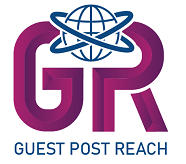Table of Contents
Global Medical Devices: Shaping the Future of Healthcare
The Covid-19 pandemic still set the tone for the healthcare sector. The virus, distance and confinement added new challenges for researchers and were also part of the hallmark of new products. To understand the speed with which innovation and medical science advance, it is enough to cite the example of vaccines against SARS-CoV-2. Such is the case of the one developed by Pfizer and BioNtech inten months, Record time. The objective of each year is to progress with the creation of quality medical articles or devices that, according to the needs of patients or specialists, offer benefits in treatment or diagnosis. innovation was committed to making the lives of patients more comfortable. They highlight devices for self-monitoring from home, which helped to have accurate measurements and avoid transfers to health centers.Overview of Global Medical Devices
The global medical devices market encompasses a broad range of products designed to diagnose, monitor, and treat medical conditions. These devices are used across various healthcare settings, including hospitals, clinics, and home care environments. The market is driven by several factors, including technological advancements, an aging population, and increasing prevalence of chronic diseases. Key Segments:- Diagnostic Devices: Equipment used for detecting and diagnosing medical conditions, such as MRI machines, ultrasound devices, and blood glucose monitors.
- Therapeutic Devices: Instruments used for treating medical conditions, including pacemakers, insulin pumps, and dialysis machines.
- Monitoring Devices: Tools for tracking health metrics, such as wearable fitness trackers, ECG monitors, and remote patient monitoring systems.
- Surgical Instruments: Devices used in surgical procedures, including endoscopes, robotic surgical systems, and surgical lasers.
- Consumables: Single-use items such as syringes, bandages, and diagnostic test kits.
What are the major trends shaping the global medical devices industry?
Several major trends are shaping the global medical devices industry, including:- Technological Advancements: Innovations such as AI, robotics, and IoT are enhancing device capabilities and functionality.
- Wearable Health Technology: The rise of smartwatches and fitness trackers that monitor various health metrics.
- Minimally Invasive Procedures: Growing preference for devices that enable less invasive surgical options.
- Personalized Medicine: Customization of devices based on individual patient needs and genetic profiles.
- Regulatory Changes: Evolving standards and regulations aimed at ensuring device safety and efficacy.
Magic mirror
Now you just have to look at yourself in the mirror for this device to perform a quick check of your body temperature, vital signs, skin analysis and even give beauty advice.Is named Themis, a tool known as a smart mirror that integrates several sensors that perform basic health checks every time the user looks into it. The checking offers results on body temperature, vital signs, skin analysis, monitoring of women’s cycles, and even offers makeup, hair and skin care tutorials.For this, the mirror has a high-quality RGB camera, an IR temperature sensor and a UV light that analyzes the skin.How are regulatory standards impacting the medical devices market?
Regulatory standards play a crucial role in ensuring the safety and effectiveness of medical devices. Agencies such as the FDA (Food and Drug Administration) in the U.S., the EMA (European Medicines Agency) in Europe, and other national regulatory bodies establish guidelines for device approval and market entry. Compliance with these standards is essential for manufacturers to gain market access and maintain product quality. Recent trends include stricter regulations for clinical trials, increased transparency in reporting adverse events, and enhanced post-market surveillance.OMRON VitalSight
The OMRON company promoted this yearVitalsight, an instrument kit designed so hypertension patients can monitor and report accurate blood pressure data to their physicians without leaving home. With the use of a smartphone, the results can be sent by the user or consulted by the doctor on a platform that keeps digital records.This device allows the health specialist to detect any abnormality in a timely manner if it occurs, and offers preventive or corrective treatment. AtConsumer Electronics Show (CES)2021, a renowned international technology fair, was presented as the first remote monitoring service for hypertensive people designed to maintain control of the blood pressure of patients at risk, improve communication with the doctor and favor the exchange of data to optimize the treatments.What are the key challenges faced by the global medical devices industry?
The global medical devices industry faces several challenges, including:- Regulatory Compliance: Navigating complex and evolving regulatory requirements across different regions.
- Innovation and Development Costs: High costs associated with research, development, and manufacturing of advanced devices.
- Data Security: Ensuring the protection of sensitive patient data, especially with the rise of connected and digital health devices.
- Market Access: Overcoming barriers to entry in emerging markets and addressing reimbursement issues.
- Competition: Intense competition from both established companies and new entrants driving innovation and pricing pressures.
Masks that monitor
The use of masks has become common during this health contingency. Among the innovations stands out that ofAirPop Active +, a fabric mask that has a unique sensor capable of monitoring the user’s breathing patterns and providing data on the quality of the outdoor air. Meanwhile, the mask BreezeIt includes two silent fans that are capable of filtering and circulating the air. It is also equipped with a UV light that disinfects it while it is charging.Another innovation in this protection is that of Project Hazel, an intelligent, transparent, ventilated protector that filters the air and that has a microphone with amplifier to promote communication.What are some notable examples of advanced medical devices currently on the market?
Several advanced medical devices are making significant impacts in healthcare, including:- Robotic Surgical Systems: Systems like the da Vinci Surgical System enable precision and minimally invasive surgeries.
- Wearable ECG Monitors: Devices like the Apple Watch Series 4 and 5 that provide real-time heart monitoring and detection of arrhythmias.
- 3D-Printed Prosthetics: Customizable and affordable prosthetic limbs created using 3D printing technology.
- Continuous Glucose Monitors: Devices such as the Dexcom G6 that provide real-time blood glucose monitoring for diabetes management.
- Telemedicine Platforms: Solutions that facilitate remote consultations and monitoring, improving access to healthcare services.
Virtual reality glasses that examine eyesight
One of the most notable innovations are the so-called VROR EYE, virtual reality glasses that include sensors that detect the movement of the eyes and stimulate them at the same time through images. The sensor has an algorithm that simulates an eye exam that is compared with data from the user’s eyes. The results of the ophthalmic analysis that can be sent to any cell phone through the application of the product, with which it is possible to save a record for future follow-up of the treating physician.How is the global medical devices market expected to evolve in the coming years?
The global medical devices market is expected to continue its growth trajectory, driven by several factors:- Aging Population: Increasing demand for medical devices due to the growing number of elderly individuals requiring healthcare services.
- Technological Innovations: Ongoing advancements in technology will lead to the development of more sophisticated and efficient devices.
- Expanding Healthcare Access: Rising healthcare investments and improved infrastructure in emerging markets will enhance market growth.
- Focus on Preventive Healthcare: A shift towards preventive and personalized medicine will drive the demand for advanced diagnostic and monitoring devices.

